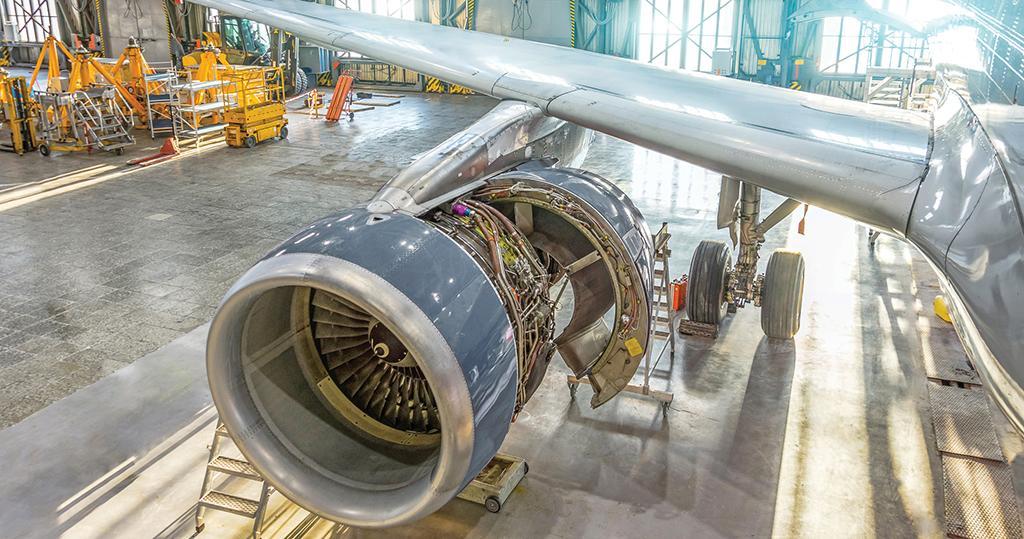
One aftermarket goal is to digitize the MRO communication system. The first step is for MROs to go paperless inside their own operations.
The second, much more difficult step, is to extend digitization throughout the aftermarket ecosystem.
Electronic marketplaces for aftermarket procurement will likely play a crucial role in taking this second step, as two major e-markets, ILS and Aeroxchange, are demonstrating.
Eric-Jan Schmidt, a marketer with ILS, notes that airline procurement is looking a lot better in spring of 2021. “The good news is that our recent KPIs, searches and quotes, are at or near pre-pandemic levels. Part procurement is looking up.”
But he is not hearing as much about ILS’s smaller e-market rivals, some of which may have gone under or become less active during the traffic slump.
ILS’s business model has been to enable buyers and sellers to find each other for aircraft parts and MRO. The two parties have then used other means to complete transactions. Because ILS gathers so much search and quote data, it can also offer valuable market intelligence to its customers.
Now ILS is expanding this business model. “We are adding gradually to our capabilities to enable the transactions,” Schmidt says. These transactions will eventually be enabled by ILS both online and with APIs.
The shift towards transaction enablement will be outlined at ILS’s annual user conference on June 23-24. The conference will also discuss other important extensions of ILS capabilities. It will be expanding its coverage of market segments globally.
Through its parent CAMP Systems, ILS will integrate with enterprise resource planning (ERP) and supply chain tools used by MROs. CAMP’s product suite includes software for maintenance management, engine health monitoring and inventory management. In addition, ILS will be announcing some new partnerships at this late-June conference.
Transaction enablement and integration with customers’ MRO and inventory software will put ILS squarely in the position of automating and digitizing many links in the aftermarket ecosystem.
And this is consistent with what ILS is seeing among its customers. “There is lots of investment in back-office processes,” says Heather Levesque, director of ILS’s application and data services.” Levesque says many companies took advantage of the pandemic to accelerate this trend toward digitization.
The ability to play in this digital world, along with scale, may become table stakes for electronic markets in MRO support. Schmidt says smaller, less sophisticated competitors have “come and gone,” since ILS’s founding in the late 1990s. “They did not capture enough business, you need minimum scale.”
Another major e-market, Aeroxchange, already enables part transactions among its members and is driving toward deeper digital collaboration.
In February, Aeroxchange launched electronic certifications with electronic signatures, more efficient in themselves and a possible step toward Blockchain for parts.
In late April of this year, Aeroxchange partnered with Ramco Systems to install AeroComponent connector at a leading MRO. This connection will link Aeroxchange transactions with Ramco’s Aviation M&E MRO Software, version 5.8. Thus, inventory technical managers and pool providers can exchange in real time data on demand fulfillment and returns.
Aeroxchange’s AeroComponent provides component pooling solutions that benefit both active requestors, that is, aircraft operators, as well as component pooling providers. The company says there are thus multiple potential beneficiaries of the new linkage, including existing and future Aeroxchange network trading partners.
And interest has been strong among these possible beneficiaries. Indeed, Ramco invested in building the connector module in response to customer requests. The software company previously built links to Aeroxchange’s AeroBuy and AeroRepair products.
The use of the new tool is fairly straightforward. For an MRO or asset manager that uses Ramco software, a simple patch type load enhancement is all that needs to be done. An airline or other operator requesting a component need only use the AeroComponent web interface or any of the most common airline ERP systems.
The Ramco partnership underscores Aeroxchange’s clear future direction. The company says it is always looking to expand its ERP partnerships to build more complete back-office integrations and “be the connective tissue that will provide commercial trading partners with the advanced analytics capability that has been elusive in this industry for decades.”
Further, Aeroxchange wants to focus on providing advanced pedigree analysis and “solving the digital thread problem.”





